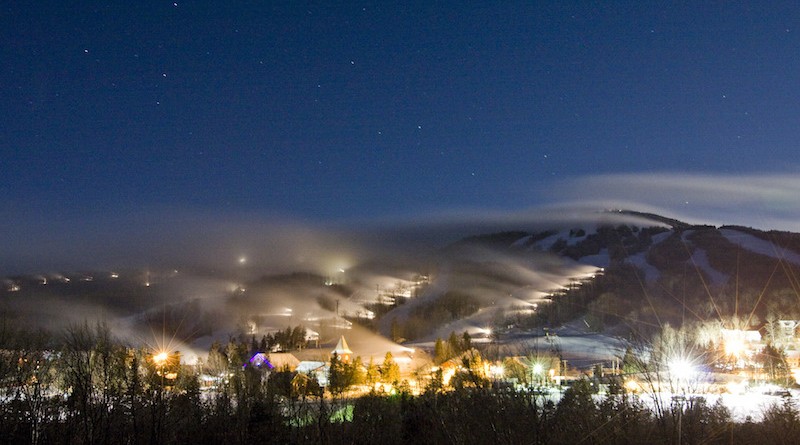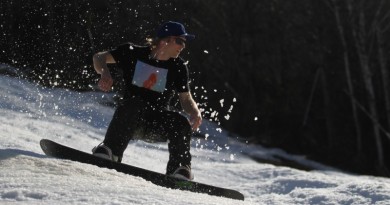Jumpstarting Winter
A cold snap and the best snowmaking in the country gave Vermont the first skiing in the U.S. this year.
For many Vermonters, winter began on Oct. 17 with a hike for first turns. Just a day later, Killington was loading chairs, thanks to massive snowmaking.
The past few seasons have seen snowmaking improvements all over the state from the largest alpine areas to Nordic networks such as those at the Trapp Family Lodge and the Rikert Nordic Center.
Last year, Killington added a fleet of 400 snowmaking guns. In one hour they can cover 80 acres with 12 inches of snow. To get ready for opening day, the jets ran for 28 hours straight, building up a base depth of a foot.
Okemo expanded snowmaking to two of its signature black diamond trails this past summer, bringing the resort’s snowmaking coverage to 98 percent. It has also boosted its snowgun capacity from 3,000 gallons of water per minute to 9,000 – enough to open any of its 120 trails in a day.
Stowe continues to reap the benefits of a three-year, $10 million investment in snowmaking. Spruce Peak’s fully automated system measures humidity, temperature and wind and then uses the data to adjust the amount of water and air needed. Thanks to the new technology and a 110-million-gallon reservoir, the resort can cover 56 acres in a foot of snow in 24 hours.
Sugarbush recently completed a five-year, $5 million project that delivered snowmaking upgrades at both Lincoln Peak and Mt. Ellen. That included the installation of 351 new guns, which are expected to help reduce statewide energy consumption and save 2,324,392 pounds of carbon emissions per year.
Last year, Ski Vermont and Efficiency Vermont partnered for the Great Snow Gun Roundup to help resorts purchase some 2,300 new low-energy snow guns and send 1,800 older guns to scrap. The estimated annual energy savings: 10,500 MWh, enough electricity to run 1,500 Vermont homes for one year, and enough diesel fuel saved to heat 340 homes.
Take that, climate change.
Photo courtesy, Mount Snow


